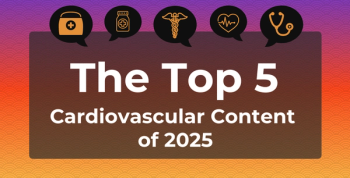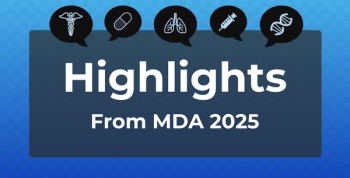
Use of GLP-1 RAs Associated With Increased Risk of NAION in Patients With Diabetes
Key Takeaways
- GLP-1 RAs are linked to an increased risk of NAION in type 2 diabetes patients, with semaglutide and liraglutide showing significant associations.
- The study involved over 3.8 million Medicare patients aged 65 and older, highlighting the demographic's vulnerability to NAION.
Results confirm previous findings that nonarteritic anterior ischemic optic neuropathy (NAION) was more likely in those who used semaglutide, a glucagon-like peptide-1 receptor agonist (GLP-1 RA).
Patients diagnosed with type 2 diabetes need to be wary of potential adverse effects from receiving glucagon-like peptide-1 receptor agonists (GLP-1 RAs), as a new study published in
NAION is the most common cause of acute optic nerve injury in those 50 years and older, with those of White race at higher risk compared with other ethnic groups.2 Previous studies have shown a connection between NAION and semaglutide but the association with other GLP-1 RAs remains to be explored. This study evaluated the association between various GLP-1 RAs and NAION, specifically evaluating the incidence of NAION in those who used the medication.
All participants in the study were 65 years or older, diagnosed with type 2 diabetes, and enrolled in Medicare, and needed to be prescribed an antidiabetic medication between 2007 and 2021 based on data from the Virtual Research Data Center of CMS. International Classification of Diseases, Ninth Revision, and International Statistical Classification of Disease and Related Health Problems, Tenth Edition, were used to determine diagnostic codes for type 2 diabetes and NAION.
Patients with optic neuritis or giant cell arteritis were excluded from the study, and patients using insulin or only metformin were excluded from the reference group to improve uniformity of glycemic control.
A total of 3,845,171 patients were included in this study who had type 2 diabetes. A total of 15.1% of the patients were prescribed GLP-1 RAs, 34.8% were prescribed metformin only, and 21.7% were prescribed insulin. NAION developed in 0.2% of the patients after a median (IQR) follow-up of 3.7 (1.9-5.9) years.
GLP-1 RAs were associated with an increased risk of NAION (HR, 1.15; 95% CI, 1.04-1.27) compared with other second-line medications, with the median time between initiation and NAION being 3.3 (1.6-5.4) years. Insulin was associated with an increased risk of NAION as well (HR, 1.43; 95% CI, 1.34-1.53) compared with metformin alone. Male sex, White race, rural residence, history of diabetic retinopathy, and use of amiodarone were all risk factors for NAION. Semaglutide (HR, 1.39; 95% CI, 1.13-1.72) and liraglutide (HR, 1.25; 95% CI, 1.08-1.45) were associated with an increased risk of NAION.
There were some limitations to this study. Using diagnostic codes may have limited the capture of NAION in patients. Also, the onset date for type 2 diabetes was not collected from patients, and all participants were 65 years or older, which limits generalizability.
The authors concluded that their results confirmed previous findings that GLP-1 RAs were associated with increased risk of NAION. “The risk of NAION warrants further research given the increasing use of GLP-1 RAs and the seriousness of NAION,” the authors concluded.
References
1. Fung KW, Baye F, Baik SH, McDonald MD. GLP-1 RAs and risk of nonarteritic anterior ischemic optic neuropathy in older patients with diabetes. JAMA Ophthalmol. Published online July 31, 2025. doi:10.1001/jamophthalmol.2025.2299
2. Wu KY, Evoy F. NAION: diagnosis and management. American Academy of Ophthalmology. August 1, 2022. Accessed August 5, 2025.
Newsletter
Stay ahead of policy, cost, and value—subscribe to AJMC for expert insights at the intersection of clinical care and health economics.








